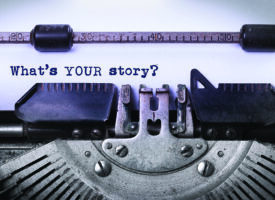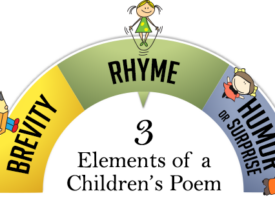Writing well requires craft. And whether you’re writing for a traditional publisher, or with a view towards self-publication, the development of your craft as an author is essential. In this series of articles, I’d like to focus on those areas of the craft that are helpful in publishing your own work. To illustrate the process I’ll share some of my own journey in learning how to write and self-publish three non-fiction books (so far). I’ll also draw comparisons with traditional publishing to get an overview so we can look at the various ways you can develop your own publishing process from first draft to distribution.
In my opinion, agents and publishers have a few key roles to play in getting literature to the public:

- They identify subject matter and projects they think people may want.
- They assist writers in the production of their work—primarily as editors.
- They print and distribute the work.
- They market the work to the right audience.
These four areas aren’t rocket science but they do require both the expertise and capital most of us lack starting out. This can be a huge barrier to even getting started as a writer. I struggled for years to write the books I had in mind feeling mostly hopeless about breaking into what seemed like a “members only” club. A closer look at the system however gave me a basic understanding of the process above. This then allowed me to use emerging opportunities to get my writing in the hands of an audience, as many and varied self-published writers have done before me—from Virginia Woolf to Guy Kawasaki.
 So, let’s look at the four main roles of a publisher (and to a degree, agents) and see what we can do to keep our own projects in development. In this first article I’d like to look at some of the ways we can develop our writing to fulfill the first role of the publisher, namely,
So, let’s look at the four main roles of a publisher (and to a degree, agents) and see what we can do to keep our own projects in development. In this first article I’d like to look at some of the ways we can develop our writing to fulfill the first role of the publisher, namely,
identifying subject matter and projects they think people may want.
Choose Projects From the Heart
Publishers have both a heart and a good eye for literature, but they are running a business. As such, they primarily choose projects that will make the most money. I’m sure you’d like to make some money as well, but I know that most writers write for the love or art of the work itself. Fortunately, self-publishing allows you to work within your own criteria here by giving you the scope to write what’s important to you regardless of traditional selection processes.
 At the very outset of my own writing projects, I identified subjects that I cared about. My reasons for wanting to write came from what I considered to be a good idea, a felt need, a gap in the culture, or something I could contribute to from the heart.
At the very outset of my own writing projects, I identified subjects that I cared about. My reasons for wanting to write came from what I considered to be a good idea, a felt need, a gap in the culture, or something I could contribute to from the heart.
I chose things I deeply connected with through both experience and imagination. These experiences can form initial ideas that may turn into a blog, a series of short stories or an essay or two. As you learn to take these core heart concerns and turn them into prose of some sort, you’re learning to select worthy material. That’s identifying subject matter.
 The actual craft of writing—from working hard each day, to laying down draft after draft, to great editing—is continually inspired by your book’s purpose. The more you understand what it is you want to say, and why you care, the more in touch you’ll eventually be with those who may want to read it. This heart-led approach focuses your writing skills and, as we’ll see in the rest of the self-publishing process, makes all the difference in choosing an editor, deciding how to print / distribute, and of course, who you’ll be marketing to.
The actual craft of writing—from working hard each day, to laying down draft after draft, to great editing—is continually inspired by your book’s purpose. The more you understand what it is you want to say, and why you care, the more in touch you’ll eventually be with those who may want to read it. This heart-led approach focuses your writing skills and, as we’ll see in the rest of the self-publishing process, makes all the difference in choosing an editor, deciding how to print / distribute, and of course, who you’ll be marketing to.
Distraction-Free Writing
Traditional publishers and agents have a series of filters they use to weed out projects. These can be as banal as genre specific submission forms to the overly detailed structural requirements of a query letter—all of which can become hurdles for the writer. Worrying and wondering about how to get published can be a massive distraction for the budding writer in a process that’s already crammed with disruptions. We get side-swiped by everything from self-image issues to eating that third cookie instead of staying focused on the work of getting the next sentence down.
 The craft here, then, is to learn to write without distraction. Self-publishing provides you with the opportunity to focus on what you really want to say without a mindset plagued by external filters. Knowing I can write a blog today
The craft here, then, is to learn to write without distraction. Self-publishing provides you with the opportunity to focus on what you really want to say without a mindset plagued by external filters. Knowing I can write a blog today
that’ll reach thousands of people, or make an ebook available via Amazon, or that I can get a decent hardcover volume in the hands of a certain audience has taught me to write with a healthy sense of disregard. My focus now is on articulating my concepts as well as I can, whether it gets published traditionally or not. This disregard now includes whether I’ll publish it or not. Which is true of my fourth book, a memoir on a sabbatical year that almost killed me. It’s so personal I may never publish it at all—but I sure as hell need to write it.
 The craft of distraction-free writing enables you to put all your energy, intuition, and priority into the core idea. In this way you develop a kind of protective space that keeps all the energy focused on your original idea without the “needs of the market” trying to hijack your work. It takes time, and some self control / discipline, but in the end the increased focus will
The craft of distraction-free writing enables you to put all your energy, intuition, and priority into the core idea. In this way you develop a kind of protective space that keeps all the energy focused on your original idea without the “needs of the market” trying to hijack your work. It takes time, and some self control / discipline, but in the end the increased focus will
add tons to the quality of your project.
Writing For 500 People or Less
Once you have a clear picture of what it is you want to say and can focus in without distractions, you can start writing with those in mind who may also care about what you care about. I suggest thinking about a community of people with similar interest. For some, this may be a group of fellow Porsche 911 owners, or fathers of children with autism. For my first book I wanted to write for people trying to figure out how to avoid the date / fail syndrome in developing relationships. Writing with a reasonable community in mind develops a natural conversation keeping the work honest.
 I think the same idea holds for fiction and non-fiction. Even if your story is about 11th Century Vikings and their fairy godmothers, you can write as though you were
I think the same idea holds for fiction and non-fiction. Even if your story is about 11th Century Vikings and their fairy godmothers, you can write as though you were
sitting around a campfire surrounded by friends interested in your tale. This group may actually represent tens of thousands of people buying your Kindle versions, similar to the published works of serial magazine writers like Robert Louis Stevenson, but you can write it in such a way as if you’re speaking to a community of “believers.”
 Sometimes I like to take this step even further and write with one person in mind. Even though in my public speaking career I had addressed thousands of people on relationships, identity, and vocations etc., when it came to writing books on the subject, I chose one person and wrote a conversation. This focus continually prompted my intuition and gave me a consistent personalized reference as I dumped those 50,000 to 80,000 words onto the page. The “personality” I wrote to also helped me later on with choosing an appropriate editor, designing the cover, and knowing who to chat it up with
Sometimes I like to take this step even further and write with one person in mind. Even though in my public speaking career I had addressed thousands of people on relationships, identity, and vocations etc., when it came to writing books on the subject, I chose one person and wrote a conversation. This focus continually prompted my intuition and gave me a consistent personalized reference as I dumped those 50,000 to 80,000 words onto the page. The “personality” I wrote to also helped me later on with choosing an appropriate editor, designing the cover, and knowing who to chat it up with
on Facebook or in public settings.
 The person or community you write to may represent thousands of others, but when the group gets too large (in your head) it’s easy to become distracted by the generic demands of trying to write to a “popular audience.” Less than 5% of all published books will sell more than 100,000 copies. Of the tens of thousands of self-published books each year, very few will break sales of 500 copies. This however is not a disappointment, it’s a community. Best-sellers are an anomaly in the publishing of books and not necessarily the goal. If your work becomes a best-seller, then great! But if you learn to write to a reasonable community you’ll be learning to write authentically, a great preparation for further success.
The person or community you write to may represent thousands of others, but when the group gets too large (in your head) it’s easy to become distracted by the generic demands of trying to write to a “popular audience.” Less than 5% of all published books will sell more than 100,000 copies. Of the tens of thousands of self-published books each year, very few will break sales of 500 copies. This however is not a disappointment, it’s a community. Best-sellers are an anomaly in the publishing of books and not necessarily the goal. If your work becomes a best-seller, then great! But if you learn to write to a reasonable community you’ll be learning to write authentically, a great preparation for further success.
 Writing with self-publishing in mind kicks your project up to the front of the line, trusting that in a world of 7+ billion people there’s always an audience. By believing in your own idea and writing to a community, you lay the groundwork for finding that audience. Your opportunity now is to share something of real value with them. This leads us to the next point, or the next article: Editing for Self-Publishing.
Writing with self-publishing in mind kicks your project up to the front of the line, trusting that in a world of 7+ billion people there’s always an audience. By believing in your own idea and writing to a community, you lay the groundwork for finding that audience. Your opportunity now is to share something of real value with them. This leads us to the next point, or the next article: Editing for Self-Publishing.
About the author:
Patrick Dodson is an international public speaker covering topics ranging from personal development to shifting cultural trends. Over the last four years, borrowing from his professional experience, he’s published three books: Stuff my Father Never Told Me About Relationships in 2009, Psychotic Inertia in 2010, and The Identity Project in 2011. These books are available worldwide both in print and ebook formats. He’s currently living in a cabin by a remote lake working on two new books, his second screenplay, and eating like a king (one of the books is a cookbook). Visit his website at http://www.patrickdodson.net
Also by Patrick Dodson:
Part 2: The Craft of Editing for Self-Publishing
Part 3: How to Print and Distribute Your Self-Published Book
Part 4: The Craft of Marketing Your Self-Published Book



